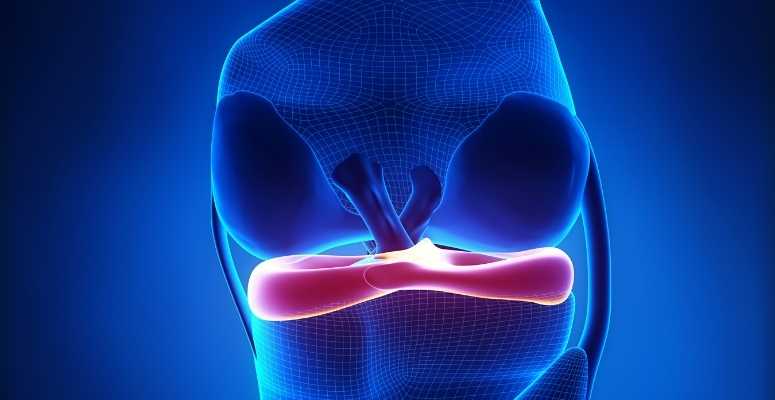by Nicole Whitbeck, SPT
What is the Meniscus?
The meniscus is a c-shaped fibrocartilage that is located within the knee. It provides cushion and shock absorption between the tibia (the bone of the lower leg) and the femur (the thigh bone).
The miniscus provides a gliding surface for the two bones to move on when performing everyday activities such as walking, getting up from a chair, and bending at the knees to pick something up. There is an inner (medial) and outer (lateral) meniscus that provide this stability and cushion while distributing forces throughout the knee joint during movement.
How Does the Meniscus Tear?
While both the inner (medial) and outer (lateral) meniscus can be torn, it is most common to have a tear in the medial meniscus.
A tear can be caused by a traumatic injury or overall degeneration of the structure. During a traumatic injury, the meniscus can be torn from a forceful twist or rotation at the knee. This can occur during a forceful pivot or a sudden stop into a turning motion, whereas degeneration occurs with gradual wear to the structure that could potentially result in a tear. Degenerative meniscus tears are commonly associated with advanced knee osteoarthritis, but not always.
Conservative Treatment vs. Surgical Treatment
While choosing a type of treatment is a collaborative endeavor between you and your doctor, it is important to consider all options that are available to you. While yes, sometimes surgery is indicated and needed for those who have sustained a traumatic meniscus tear, surgery is not always the first choice for all meniscus tears. Studies show that for those who have sustained a degenerative meniscus tear, there is no added benefit of receiving surgery to repair the meniscus tear.
A non-operative conservative approach is preferred and is considered the first-choice treatment for these individuals. The reason for this is the symptoms that a person with a degenerative meniscus tear may be experiencing may not be directly related to the meniscus tear but to general degeneration of the joint itself. There are no significant differences in pain relief or improved knee function in those that received the surgery compared to those who underwent conservative treatment. Because of this, it is important for conservative treatment to take place for 3-6 months consistently before surgery is an option.
What to Expect From Conservative Treatment
There are a few factors that contribute to the success of conservative treatment:
- Physical Therapy – including a home exercise program to continue to manage symptoms.
- A nonsteroidal anti-inflammatory medication – to decrease inflammation to the area.
- Intra Articular injections – this may further decrease inflammation to the area to allow for a decrease in pain, but this is only temporary.
Physical therapy may be the most important factor in conservative treatment of a degenerative meniscus tear. The aim of physical therapy in this case is to decrease pressure and strain on the knee by creating a stronger support system throughout the body. The ankle, hip and core muscles are important stabilizers for the knee, when these muscles are stronger and more stable, the knee has a better support system and may not experience as much load. Physical therapists will use exercises and functional movements to strengthen the muscles in and around the knee joint to help decrease symptoms and improve overall function.
Contact Capital Area Physical Therapy and Wellness when you need physical therapy for painful knee conditions. Our experienced staff can provide therapy and rehab for sports and traumatic knee, hip, foot and ankle injuries. Call 518-289-5242 today to schedule an appointment at one of our three conveniently located physical therapy clinics.
References:
1. Beaufils, P., Becker, R., Kopf, S. et al. Surgical management of degenerative meniscus lesions: the 2016 ESSKA meniscus consensus. Knee Surg Sports Traumatol Arthrosc 25, 335–346 (2017). https://doi-org.libraryproxy.quinnipiac.edu/10.1007/s00167-016-4407-4
Lee, DY., Park, YJ., Kim, HJ. et al. Arthroscopic meniscal surgery versus conservative management in patients aged 40 years and older: a meta-analysis. Arch Orthop Trauma Surg 138, 1731–1739 (2018). https://doi-org.libraryproxy.quinnipiac.edu/10.1007/s00402-018-2991-0
Life with a degenerative meniscus tear. Buffalo Rehab Group | Physical Therapy. https://buffalorehab.com/blog/life-with-a-degenerative-meniscus-tear/. Published January 8, 2020. Accessed September 27, 2021.






